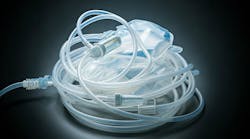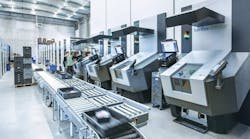The value share of biopharma products worldwide has grown from virtually zero to 22 percent (about $130 billion) in only 20 years, and is predicted to reach more than 40 percent by 2020. Cost of good sold (COGS) are a highly variable 15 to 30 percent for biological products today, making cost and production quality key competitive advantages. This cost share is likely to increase drastically as the expiry of key patents over the next decade ramps up price pressure in the market, as it did for small molecules with the entry of generics. Furthermore, quality issues in biopharmaceutical production lines can have significant effects on the sales and the reputation of a company.
The current situation should be enough to put manufacturing high on the biopharma CEO’s agenda, but it is the forthcoming changes in the technological and commercial landscape of the sector that make the most compelling case for top management attention now.
Radical Improvements in Manufacturing Performance
The technological improvement potential in the biopharma supply chain dwarfs the incremental, “lean” improvements available to small-molecule producers today. There is a general industry consensus that new production technologies are likely to lead to radical changes in development lead times and manufacturing performance. For example, in monoclonal antibody production, fermentation titers are likely to rise beyond 10 grams per liter from the current 4 grams, with yields after purification as high as 80 percent from the current 50 or 60 percent and failure rates falling to near zero. New manufacturing processes, like perfusion systems for the production of mAbs or cell-line expression of vaccines, may dramatically improve productivity, while new purification technologies are expected to increase quality and decrease contamination risks.
New Commercial Models and the Rise of CMOs
Changes in the commercial environment will be equally dramatic. Biomanufacturing technologies have historically been driven by originators and 80 percent of worldwide fermentation capacity is still in their hands. The high value of biopharma manufacturing processes is a strong incentive for new players to enter the market, however, either as contract manufacturing organizations (CMOs) or in the production of biosimilars.
The coming years will see a substantial increase in world wide biomanufacturing capacity. Mammalian fermentation volume is expected to grow from the current 2.1 million liters to 3 million by 2013-15, a 40 percent increase, of which 0.6 million liters is in construction or validation. Around half of all the expected new mammalian capacity is expected to be built in Asia, making the region a new biopharma hub, not only for fast-growing local markets, but also for supply to the rest of the world. Many Asian governments are supporting this development; biotechnology is one of the seven key initiatives in China’s latest 5-year plan, for example. Once these new players overcome the initial technological hurdles and develop their in-house capabilities, emerging-market biomanufacturers may build a substantial cost advantage that could be crucial in the biosimilars arena, but also important for patented drugs.
This new capacity will be only partly absorbed by the growth in demand for biopharmaceuticals, which we expect to be around 40 percent in the next 3 to 5 years. A significant share of the demand increase is likely to be met by the anticipated productivity increase of titers and purification yield, so the remaining capacity will further increase cost pressure in the industry, driving process technology innovation.
New Manufacturing Platform Technologies
Keeping up in the race to evolve product development and manufacturing technologies will be difficult, but failure to do so may leave companies with manufacturing systems that cost too much to run, or which are too inflexible to respond to evolving market requirements.
The most successful technological players in the sector are likely to be those that can maximize the return on their investments by moving away from the product-by-product approach common today and adopting a platform strategy in which the same process steps and production parameters can be applied to a broader range of products with dependable results. Early successes, for example the proprietary mAbs expression systems developed by leading CMOs, are already demonstrating the potential of such an approach.
These platform technologies are now being licensed to new entrants that are willing to pay to enjoy the advantage of state-of-the-art technologies. Building strong manufacturing platforms will require time (18 months to 2 years or more), strong and effective relationships with regulators, and a change in the way companies approach product and process development. Standardization, wherever possible, will need to become a key mantra. They will also have to reinforce links between their CMC and manufacturing organizations, perhaps even merging them, to ensure that product development decisions are made with downstream capabilities in mind. Technological solutions will be important, too. Advanced real-time process automation technology, for example, will help to deliver greater manufacturing flexibility, improved yields and better quality.
Finally, companies will need to take some risks. As they may not know which will ultimately be the winning solutions, players will have to work with current technologies (e.g. fed-batch fermentation processes or CHO cell lines), while simultaneously evaluating innovative approaches, like disposable technologies or new organisms as expression systems.
Choosing the Right Manufacturing Strategy
As they plan their technical investments, companies must also continue to monitor change in the commercial environment. While robust manufacturing platforms may offer sustainable competitive advantage, there may equally be cases where it is better to share the risk with a partner, or to outsource manufacturing responsibility altogether. Many organizations are already experimenting with new partnership or outsourcing solutions; the recent Novartis-Lonza and Hospira-Celltrion deals are good examples.
The three historically important rationales for outsourcing are likely to remain valid in biopharma. First, companies may consider the outsourcing of older products to avoid capital investment in new capacity deployment for the launch of new ones. Second, they may use external capacity as a buffer to transfer the risk of demand variability. Finally, particularly for small, R&D focused players with limited in-house capabilities, a CMO can become a valuable source of CMC and manufacturing expertise.
As the technological challenges associated with biopharma production increase, it is likely that even larger, more established companies will also come to the conclusion that it would be more cost-effective for them to partner with a competitive biomanufacturer or license a pre-existing platform technology. This change is already beginning. We have seen one large pharmaco, for example, that reduced costs by more than $300 million annually in its biopharma production by streamlining its manufacturing footprint, outsourcing to CMOs and improving its internal efficiencies.
These conditions will lead to more CMOs moving beyond the low-profile service provider role and positioning themselves as long-term strategic biomanufacturing partners. In parallel, biosimilars players will exploit low production costs to undercut existing originators as patents expire. These companies may find an easier market in developing countries, where price is an important driver, and the cost to develop a market is low, but they will also begin to steal share in developed markets as they prove to be dependable and safe. As an example, in Korea alone, five players are currently conducting clinical trials with mAbs produced in their own manufacturing facilities.
All these changes will lead to increasingly difficult decisions for established bio-pharma companies. Should they continue to invest in proprietary technologies in order to achieve competitive advantage from faster development, lower costs or better quality? Or should they opt out and aim to secure adequate manufacturing performance from CMO partners? These choices are strategically critical, as the decisions companies make today could lock them in to their chosen approach for the long term.
Despite its rapidly growing importance, biopharma is still a young industry. Its technological and commercial landscape is certain to change dramatically over the next few years. To navigate these changes successfully, established pharma players need to make some tough decisions about their manufacturing strategies now.
About the Authors
Marco Ziegler and Alberto Santagostino are Consultants in McKinsey & Company's Pharmaceutical Operations practice, where they lead the firm’s Biotechnology initiative.





